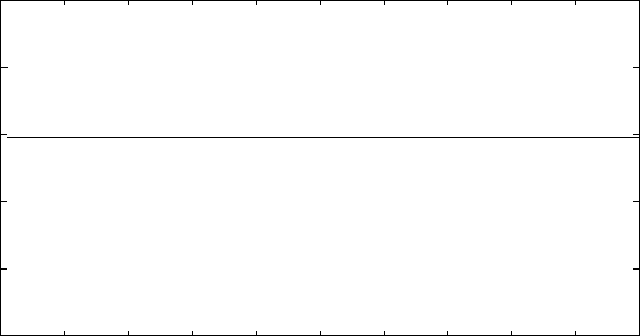The Evolution of GDP under Perfect Foresight

0 10 20 30 40
50 60 70 80 90 100
time
Figure 2: The Evolution of Ouptuput under Perfect Foresight.
Furthermore, equation (17) indicates that xt = 2ψkt, where ψ = ∙-γ. Iteration
by one period implies that xt+∙ = 2ψkt+∙. Thus, the level of investment at time
t is given by
(23)
kt+1 2(1 + ψ ∙
Therefore,Vt∙ι , t2 : ktl = kt2 ∙ Naturally, under the assumption of perfect fore-
sight the level of investment and the level of physical capital are constant
and independent of time. Moreover, recall that in equilibrium the marginal
propensity to save equals to the level of investment equation (10.) Therefore, it
turns out that in equilibrium the average propensity to save is a constant, i.e.,
Vt1,t2 : βtl = βt2 ∙ Consequently aggregate output, as given by formula (21), is
constant. Figure (2) presents sample dynamics of output.
Clearly, the assumption of perfect foresight leads to a stable equilibrium in
which all variables are constant and, in particular, in which aggregate output
does not fluctuate. Therefore, should there any oscillations occur if the assump-
tion of perfect foresight is relaxed the oscillations will not be due to the fact
that the Diamond OLG model is used as the benchmark.
The assumption of perfect foresight leads to an uninteresting equilibrium
dynamics. The situation is different if one allows for alternative expectation
formation technologies. Recall that xt+∙ determines the amount saved by young
agents at time t. Therefore, economic agents must form expectations with the
regard to xt + 1. In particular, if agents decide to expect x≡+1 at time t then the
level of investment and, hence, the marginal propensity to save take the form
βt=kt+∙=2 (1 - χ^+ι) ∙
(24)
12
More intriguing information
1. Economie de l’entrepreneur faits et théories (The economics of entrepreneur facts and theories)2. Income Taxation when Markets are Incomplete
3. Trade Openness and Volatility
4. The name is absent
5. Monetary Policy News and Exchange Rate Responses: Do Only Surprises Matter?
6. LABOR POLICY AND THE OVER-ALL ECONOMY
7. The InnoRegio-program: a new way to promote regional innovation networks - empirical results of the complementary research -
8. The name is absent
9. The name is absent
10. The name is absent